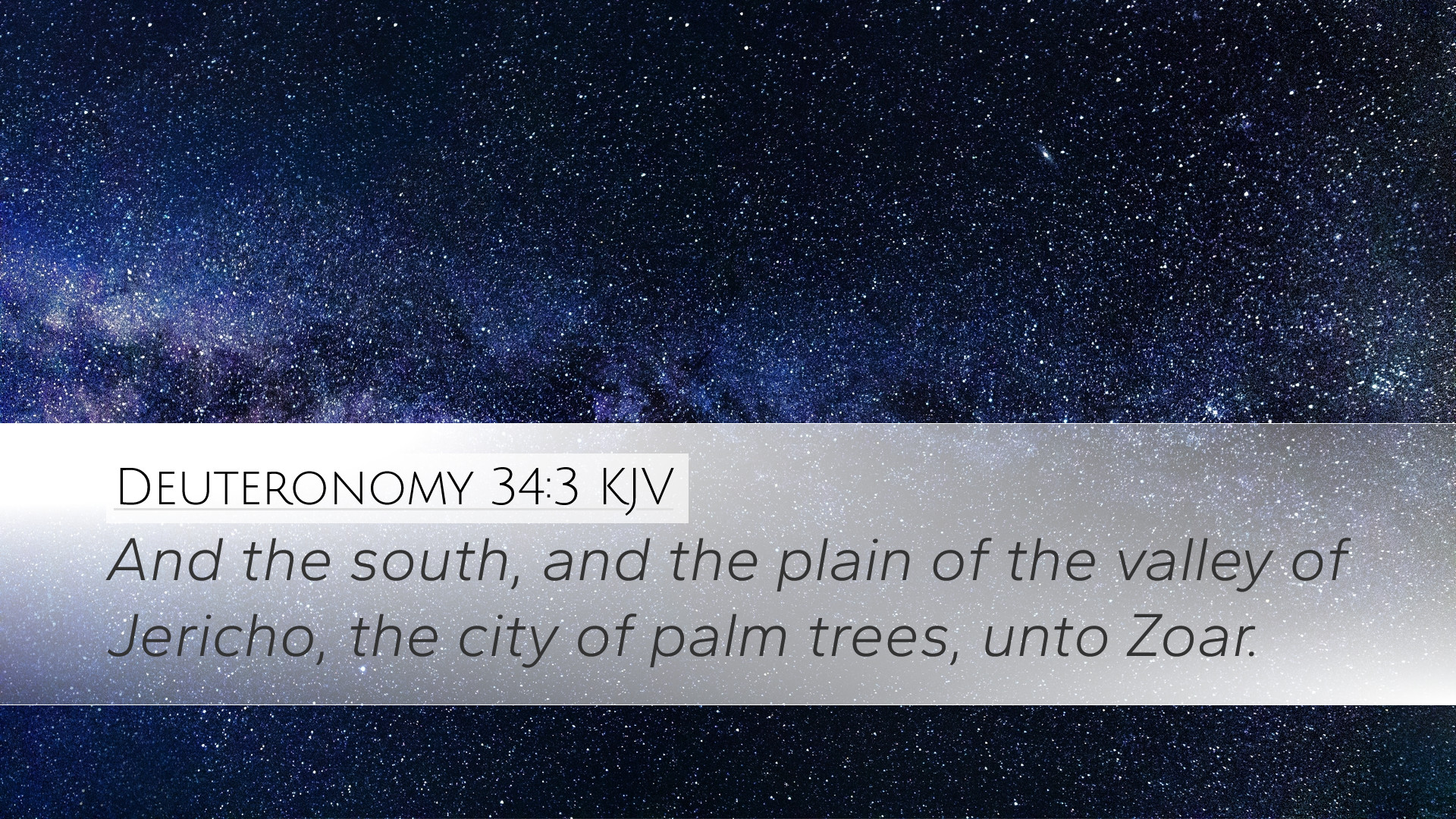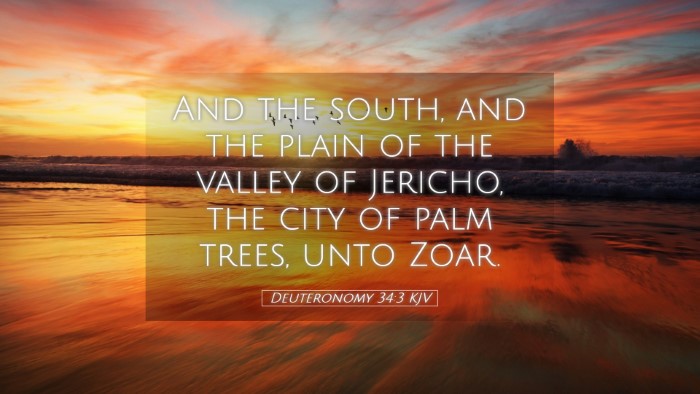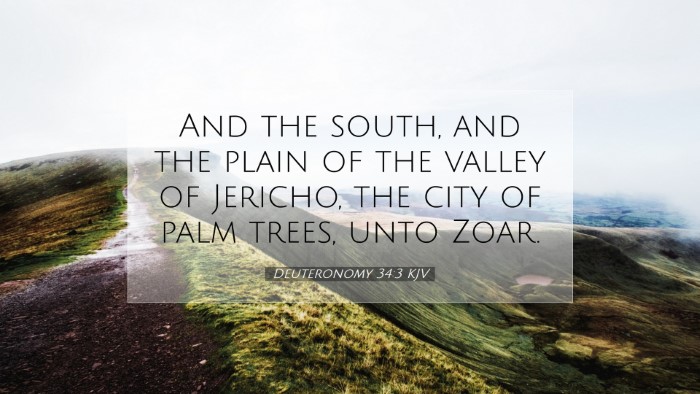Commentary on Deuteronomy 34:3
Verse Reference: Deuteronomy 34:3 - "And the plain of the valley of Jericho, the city of palm trees, unto Zoar." (KJV)
Overview
This closing verse of Deuteronomy provides a geographical and symbolic conclusion to the life of Moses, showcasing the land that was promised to the Israelites. Within this context, the mention of the valley of Jericho and Zoar serves to remind the readers of God's faithful provision and the significance of the land, which was promised to the descendants of Abraham.
Insights from Public Domain Commentaries
Matthew Henry's Commentary
Matthew Henry highlights the importance of the location mentioned in this verse. Jericho, known as "the city of palm trees," symbolizes prosperity and vitality. The geographical description serves multiple purposes:
- Historical Significance: Jericho is one of the oldest inhabited cities, and its mention connects the narrative to the larger story of Israel's conquest.
- Theological Reflection: The valley signifies the challenges faced by the Israelites but also their eventual triumph as they prepare to enter the Promised Land.
- Encouragement for Believers: The mention of Zoar, a city of refuge, underscores the grace and mercy of God, indicating the hope that remains for those who trust in Him.
Albert Barnes' Notes on the Bible
Albert Barnes elaborates on the features of the valley of Jericho:
- Geographical Context: Barnes notes the strategic and picturesque aspects of Jericho, which is described as flourishing and fertile, positioned amidst a harsh desert landscape.
- Symbol of New Beginnings: The valley of Jericho serves as a threshold, a place marking transition—the Israelites are about to embark on a new chapter of their history.
- Hope and Promise: The picturesque description serves to inspire hope, particularly for those who faced hardships during their wanderings in the wilderness.
Adam Clarke's Commentary
Adam Clarke provides a detailed analysis of the cities and regions mentioned in this verse:
- Jericho's Symbolism: Clarke emphasizes that Jericho, with its palm trees, represents the beauty and appeal of the land God has given to His people.
- Connection to Zoar: The city of Zoar is relevant as it connects back to the narrative of Lot and Sodom, illustrating God's mercy in judgements.
- Spiritual Lessons: The transition from wilderness to the promised land offers theological reflections about the journey of faith and the ultimate entrance into God's promises.
Thematic Reflections
The themes that emerge from Deuteronomy 34:3 resonate deeply with various aspects of Christian life:
- Faithfulness of God: This passage emphasizes God's unchanging nature and His adherence to His promises, demonstrating that His plans endure despite human failings.
- End of an Era: The transition marked by Moses’ death signifies the closing of one chapter of leadership and the beginning of a new one under Joshua's guidance, which encourages future leaders to build on the foundations laid before them.
- Hope Amidst Change: The duality of landscapes—lush Jericho contrasting with the harsh wilderness—symbolizes the hope that believers carry even amid uncertainty and transitions in life.
Application for Today
For pastors, students, theologians, and scholars, Deuteronomy 34:3 invites a multifaceted reflection:
- Pastoral Leadership: Leaders are reminded that they often stand in the gap between wilderness experiences and the promises of God, guiding communities toward hope and purpose.
- Spiritual Resilience: Believers are encouraged to remain steadfast and hopeful during transitional seasons, looking forward to the fulfillment of God's promises.
- Covenantal Context: The mention of cities and land calls for deeper study regarding God’s covenant with His people, implicating that our understanding of scripture is deeply rooted in historical contexts.


